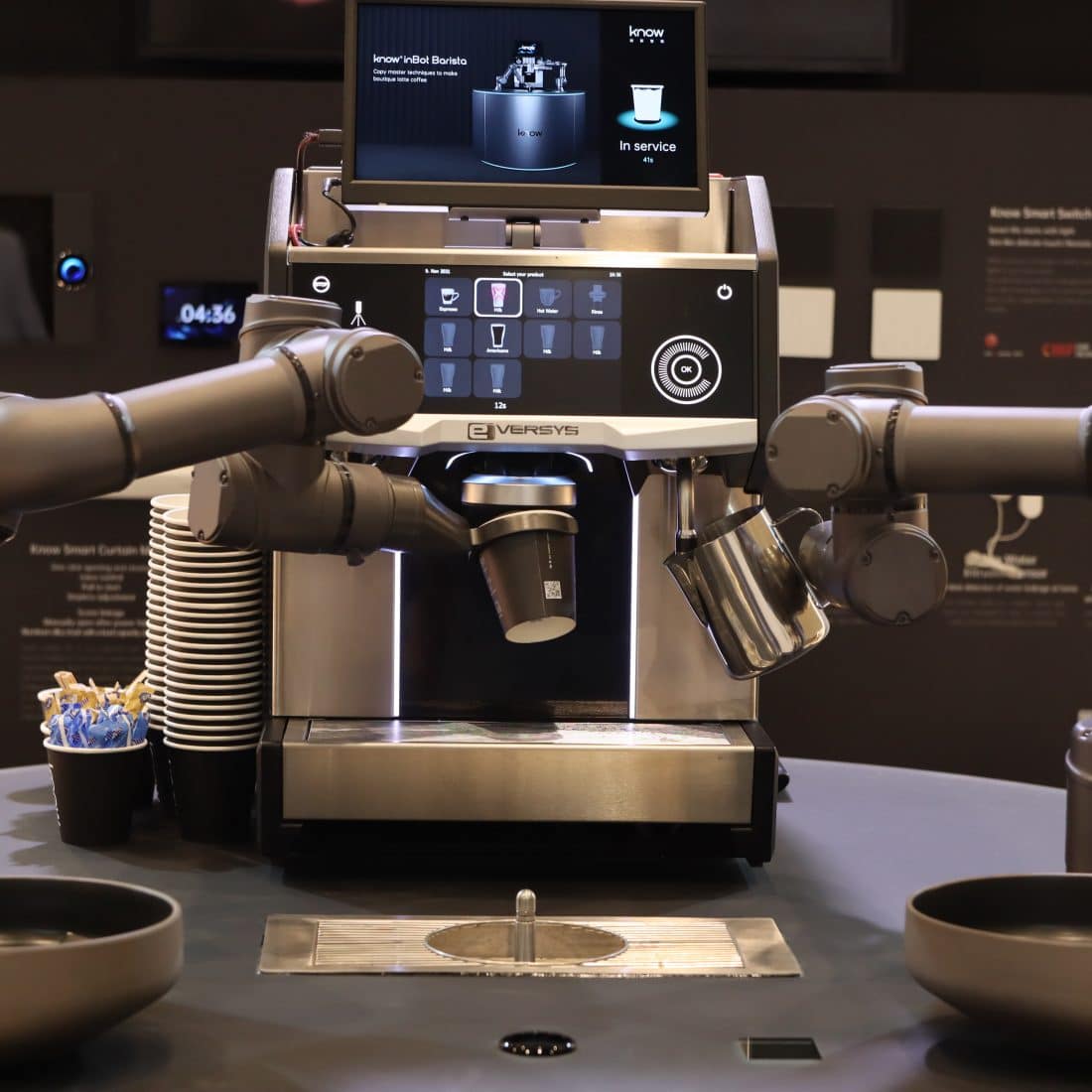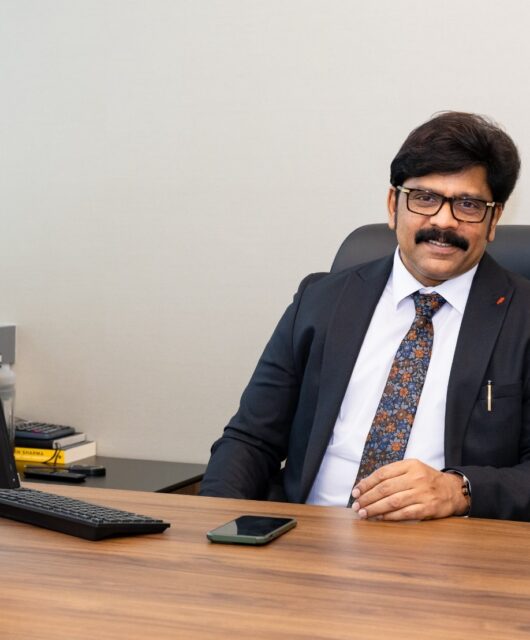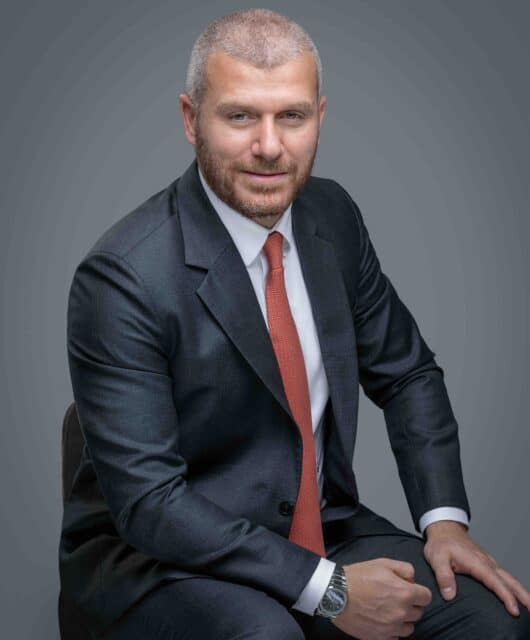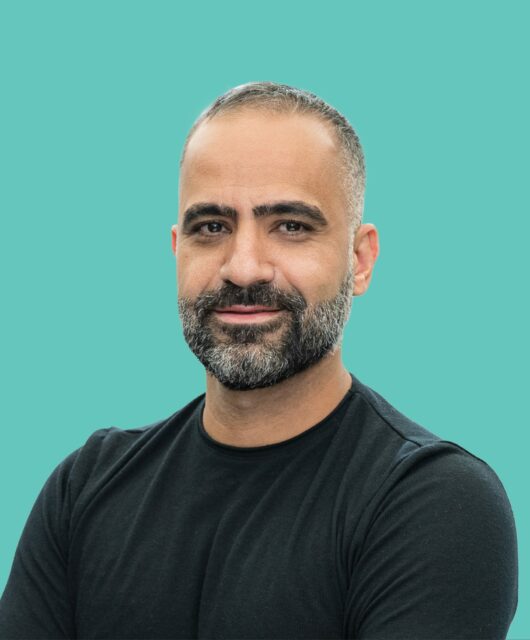 Kerem Cengiz, managing director of LWK + PARTNERS, discusses how digital solutions are drastically altering operational practices and accelerating project delivery.
Kerem Cengiz, managing director of LWK + PARTNERS, discusses how digital solutions are drastically altering operational practices and accelerating project delivery.
At this last year’s Cityscape Global at Dubai Exhibition Centre in Expo 2020, LWK + PARTNERS hosted a capsule display inspired by travelling trunk shows, the exposition titled “MACRO – TO – MICRO | CITY – TO – HOME”
At a stroke, this has transformed the practice into an agent of digital change. One not merely talking design of the intelligent environments, instead of true digital transformation. The design, production, and integration of smart and automated systems for the built environment with their sister companies is BIM and Know. Kerem Cengiz, managing director, MENA states “that as innovators we seek a better urban future for the global communities in which we are established, LWK + PARTNERS has long adopted a multidisciplinary approach that we have developed across our technology-led research studios to harness the possibilities of the future through digital transformation, integration and now automation both in our studios but in people’s workplaces and homes.” Cengiz went on to say: “By 2025, it predicted that there will be at least 26 major intelligent cities around the world. While some still believe that as our cities get more intelligent, they will resemble dystopian science fiction movies, the reality is that the quality of life in these cities has already, and will continue to dramatically improve. Cities are becoming more efficient with better services.”

To reach these ideals, Cengiz spoke of the process itself and evaluated the challenges that LWK + PARTNERS and its sister companies isBIM and Know faced in their respective journeys of coming together and how they responded to technology and innovation in their planning, architectural design, and how the execution of the projects is pivoting. “The traditional project execution paradigm currently in use has limitations and is not well equipped to handle the complexities of implementing the significant capital projects we are seeing in the region today,” Cengiz stated. He went on to explain that “these traditional execution models can lead to cost and schedule overages. There are many examples of significant recent projects taking longer than expected to complete at a higher-than-expected cost.” As cities continue to develop, new tools emerge to change the way architects, contractors and consumers envision and create the built environment. Building data and codes are becoming more accessible, and in turn, have begun to reach a point where homeowners and developers can input a set of information and an optimised design is produced. Artificial intelligence, machine learning, generative design and automation have begun to our industry as we know it. As systems and tools to reimagine the built environment, they present diverse opportunities to rethink traditional workflows and accessible automation products for the way we wish to live our lives. For example, this year we showcased one of our groups designed Robotic Baristas at Cityscape, it attracted an incredible level of attention and delight, yet automation has been widely adopted by the manufacturing industry for decades. We want to bring this into what we do and what we offer. Yet, we seldom find high levels of automation in the construction industry or in our homes. We asked ourselves why is this and how can we make it a reality? Ultimately, the least discussed but most powerful benefit of robotics and automation in construction is the unlocking of design possibilities and the automation of our day to day living environments and how this practically interfaces at the city intelligence scale.
 We decided to actively explore our partnership with sister company Know to explore opportunities to commercialise robotic technologies, automated systems, and AI. To adapt them to the workspace and our homes in a way that would encourage the adoption of automation within our communities and cities. For us it has been a paradigm change, it is disruptive and causes the business to redefine how it works so that it delivers a positive customer experience. Digital solutions are significantly changing operational standards and streamlining project delivery. Key to this shift has been the technical data hub and the common data environment created by our sister company isBIM which is at the core of digital execution. Without these two essential unifying elements, the various information systems we use would be nothing but a collection of information silos. The common data environment is vital to providing project participants with one set of data to describe the various aspects of the project and is essential in maintaining data integrity. The hub gathers information and is the single access point for all project participants and stakeholders to get project data and documents easily and quickly. What is different in our common data environment is how information is stored and shared among these applications and the high degree of integration among these information systems, which eliminates the silo effect. This makes it easier to unlock the full potential of new digital technologies, such as augmented reality, in the design and construction of a capital project. Cengiz concluded by stating: “Intelligent city technology doesn’t necessarily consist of autonomous vehicles and drones. In fact, it can take on simpler initiatives like air quality sensors near highways, water sensors in stormwater drains, etc.”
We decided to actively explore our partnership with sister company Know to explore opportunities to commercialise robotic technologies, automated systems, and AI. To adapt them to the workspace and our homes in a way that would encourage the adoption of automation within our communities and cities. For us it has been a paradigm change, it is disruptive and causes the business to redefine how it works so that it delivers a positive customer experience. Digital solutions are significantly changing operational standards and streamlining project delivery. Key to this shift has been the technical data hub and the common data environment created by our sister company isBIM which is at the core of digital execution. Without these two essential unifying elements, the various information systems we use would be nothing but a collection of information silos. The common data environment is vital to providing project participants with one set of data to describe the various aspects of the project and is essential in maintaining data integrity. The hub gathers information and is the single access point for all project participants and stakeholders to get project data and documents easily and quickly. What is different in our common data environment is how information is stored and shared among these applications and the high degree of integration among these information systems, which eliminates the silo effect. This makes it easier to unlock the full potential of new digital technologies, such as augmented reality, in the design and construction of a capital project. Cengiz concluded by stating: “Intelligent city technology doesn’t necessarily consist of autonomous vehicles and drones. In fact, it can take on simpler initiatives like air quality sensors near highways, water sensors in stormwater drains, etc.”
Governments and communities believe that technology can solve problems, Cengiz rephrased it, “putting people at the centre of the equation, we can initiate a better conversation, determine specific issues, and find contextual technology-based solutions to fix obstacles.” He continued: “Smart cities have become a tool for marketing, with identical strategies implemented everywhere in the world, we suggest starting small. With precisely contained activations, city leaders can identify key problems and explore them with intelligent technologies. Different technologies can be explored, monitored and amended according to tangible results, cities can reach more efficient solutions. These are the discussion that LWK + PARTNERS and Know are having with governmental entities across the region right now.”







